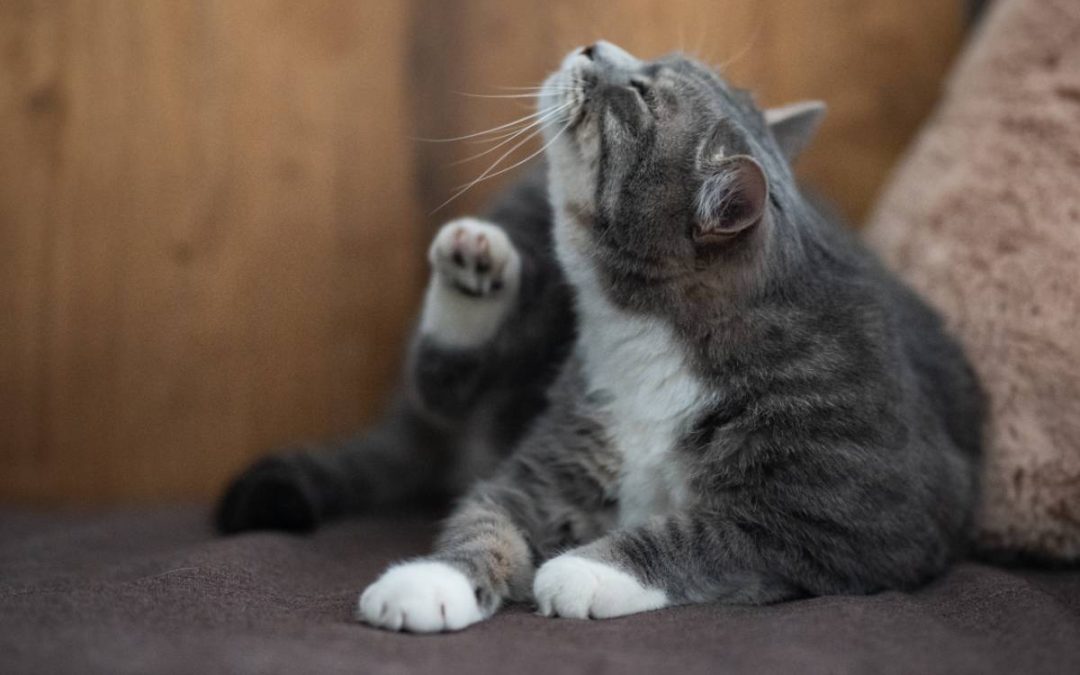Does the thought of finding a flea on your pet terrify you? Have you heard horror stories of pet owners finding fleas inside their home, sometimes in the dead of winter? How can that be possible? Don’t fleas die when it gets cold?
I’m going to show you how this IS possible, give you the information you need to understand the flea life cycle, and show you how to get rid of fleas if they’ve moved in to your home.
What is it about these pesky freeloaders that puts pet owners on edge? Why is it so scary to think of having a flea problem in your home or on your pet?
- Fleas carry diseases
- They make you and your pet itchy and uncomfortable
- Many pets develop flea allergy dermatitis, due to sensitivity to flea saliva
- Time and money: Getting rid of a flea infestation can be costly and time consuming
Did you know that discovering 1 adult flea could mean you have 100 fleas in different life stages?
Getting rid of fleas can be very difficult, because you aren’t just dealing with the adult flea. 95% of the flea problem is IN the home, while only 5% of the problem is ON your pet. If you do have a flea infestation, you have to treat both your pet AND the environment in order to break the flea life cycle.
There are 4 stages of the flea life cycle.
Stage 1 = Eggs
Adult fleas can lay 40 to 50 eggs in one day. This means 1 adult flea can lay hundreds of eggs in just a few days. These flea eggs fall off of your pet, onto the floor, bedding and furniture and will hatch within 1 to 10 days.
Stage 2 = Larvae
Flea eggs hatch into larvae that burrow deep in rugs, furniture, and between floor boards. Flea larvae like humid, warm conditions and eat flea droppings and organic material like skin debris that fall from our pets. This immature flea can stay in the larval stage for several days to a few weeks.
Stage 3 = Pupae
Flea larvae spin a cocoon where they develop into adults. They can emerge from their cozy cocoon in as early as 14 days, or they can stay dormant in this pupae stage for several months.
Pupae are resistant to cold temperatures, drying, or insecticides. Flea pupae stay in their cocoons until vibrations, pressure, heat, noise, or carbon dioxide wake them from their deep sleep.
Stage 4 = Adult flea
Once the adult flea emerges from their cocoon, they must find a warm blooded host within a few days in order to survive. Once they find their host, they can live two to three months. And then the cycle starts all over again, and again, and again….
How do I avoid a flea infestation?
Prevention is the key. There are a wide variety of flea prevention products available in the form of topical liquids, collars, chewables and pills. Work with your veterinarian to determine which product and route of administration is best for your pet.
What do I do if I have a flea infestation in my house?
Step 1:
Vacuum, vacuum, vacuum! Vacuum floors and soft furnishings every day. All the different stages of the flea life cycle develop at different rates, so each day you will pick up the ones that have hatched overnight.
Remember to get all the nooks and crannies, and don’t forget sofa cushions, underneath furniture, and your pets bedding
**IMPORTANT TIP: Throw away your vacuum bag after use, as flea eggs will hatch inside and escape, starting the cycle all over again. Put the vacuum bag in a sealed trash bag and dispose of it right away.
Step 2:
Wash your pet’s bedding regularly. If your pet shares your bed, wash your bedding as well. If you notice flea bites on your legs, it is a good indicator that there are fleas cozying up to you at night.
Step 3:
Ask your veterinarian for a product you can safely spray in your home. Look for a product that kills adult fleas, eggs and larvae, and won’t harm children or other pets. Carefully follow product instructions on the packaging and be sure to let your veterinarian know if you have birds, reptiles, or pocket pets at home.
Spray cracks between floor boards, carpets, furniture edges, and all the nooks and crannies. Focus on areas your pet likes to hang out and rest.
Step 4:
Treating your yard may be necessary with serious flea infestations. When it comes to treating the yard, I recommend getting professional help and asking for an environmentally friendly spray. Avoid areas of full sun, as fleas don’t typically live there. Instead, focus on bushes, underneath decks, plants and shady areas.
Now that you understand the flea life cycle, you’re one jump ahead. Preventing fleas is much easier and cheaper than eliminating a flea infestation. If your pet isn’t already on flea prevention, talk to your veterinarian as soon as possible to determine which preventive is best for your pet.
Have you ever dealt with a flea infestation? Do you have any tips for removing fleas from your home or environment? If so, we’d love to hear from you. Please share in the comment section.


Recent Blog Comments